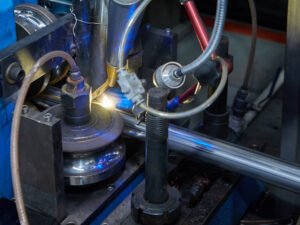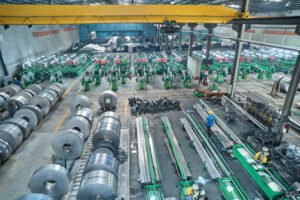CAPEX против OPEX: истинная стоимость владения оборудованием для производства труб в странах Персидского залива
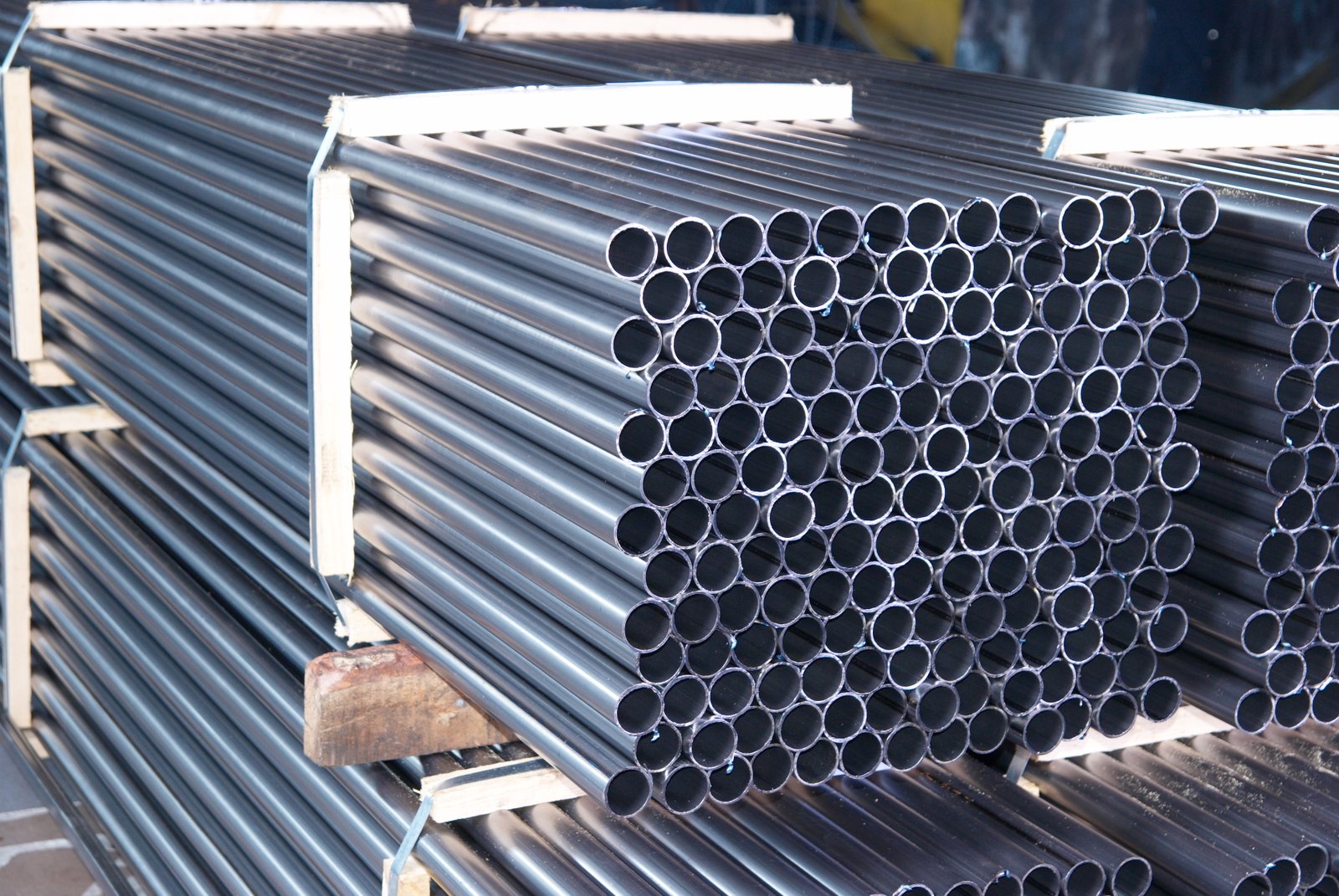
Are you struggling to decide between a lower upfront cost and long-term operational efficiency for your next tube mill? This classic CAPEX vs. OPEX1 dilemma can feel paralyzing, especially in the competitive GCC market where every dirham and riyal counts towards your bottom line and production stability.
The core debate for tube manufacturers is whether to prioritize a low initial Capital Expenditure (CAPEX) on machinery, or invest more upfront in a system with lower long-term Operational Expenditures (OPEX). This decision profoundly impacts cash flow, profitability, and the Total Cost of Ownership (TCO).
Making the right choice isn't just about the purchase price; it's a strategic decision that will define your operational capacity, product quality, and competitive edge for years to come. In my 15 years of experience, I've seen companies thrive by looking beyond the sticker price to understand the full lifecycle cost of manufacturing equipment2. This article will guide you through that very analysis.
Understanding the true cost of ownership requires a shift in perspective. It's about moving from "What does it cost to buy?" to "What does it cost to own and operate over the next decade?" This involves a deep dive into factors often overlooked in the initial procurement phase, such as energy consumption, material utilization, maintenance schedules, and labor requirements. For manufacturers in the Gulf, where ambitions for industrial leadership under initiatives like Видение Саудовской Аравии 20303 are high, making a forward-thinking investment in high-efficiency, automated machinery isn't just an option; it's a strategic imperative for sustainable growth and global competitiveness.
What are the CAPEX and OPEX in the context of tube manufacturing machinery?
Is the initial price tag of a new tube mill the only cost you're considering? Many manufacturers fall into this trap, only to be hit by unforeseen expenses down the line. Focusing solely on a low upfront investment can lead to a cascade of high operating costs that erode your profitability over time.
In tube manufacturing, Capital Expenditure (CAPEX) is the upfront investment to purchase the machinery itself. Operational Expenditure (OPEX) encompasses all the recurring costs required to run and maintain that machinery, including energy, labor, raw materials, consumables, and routine maintenance parts.
Differentiating between these two cost categories is the foundational step in making a sound financial decision. While CAPEX is a one-time, significant outlay that impacts your balance sheet and requires careful capital budgeting, OPEX is the ongoing expense that directly affects your income statement and day-to-day cash flow. For a tube producer in the GCC, a region characterized by a hot climate, ambitious industrial goals, and a dynamic labor market, the interplay between these two is particularly critical. A machine with a low CAPEX might seem attractive, but if it's not designed for the region's specific challenges—like the need for robust cooling systems or dealing with fine dust—its OPEX can quickly spiral out of control. It's not just about buying a machine; it’s about investing in a production capability. Understanding how each component of your operational environment contributes to the total cost is paramount. I've worked with clients who initially celebrated a "bargain" purchase, only to discover a year later that their maintenance and scrap costs had doubled, completely negating the initial savings. This is why we must dissect the components of TCO (Total Cost of Ownership)4 before making any commitments.
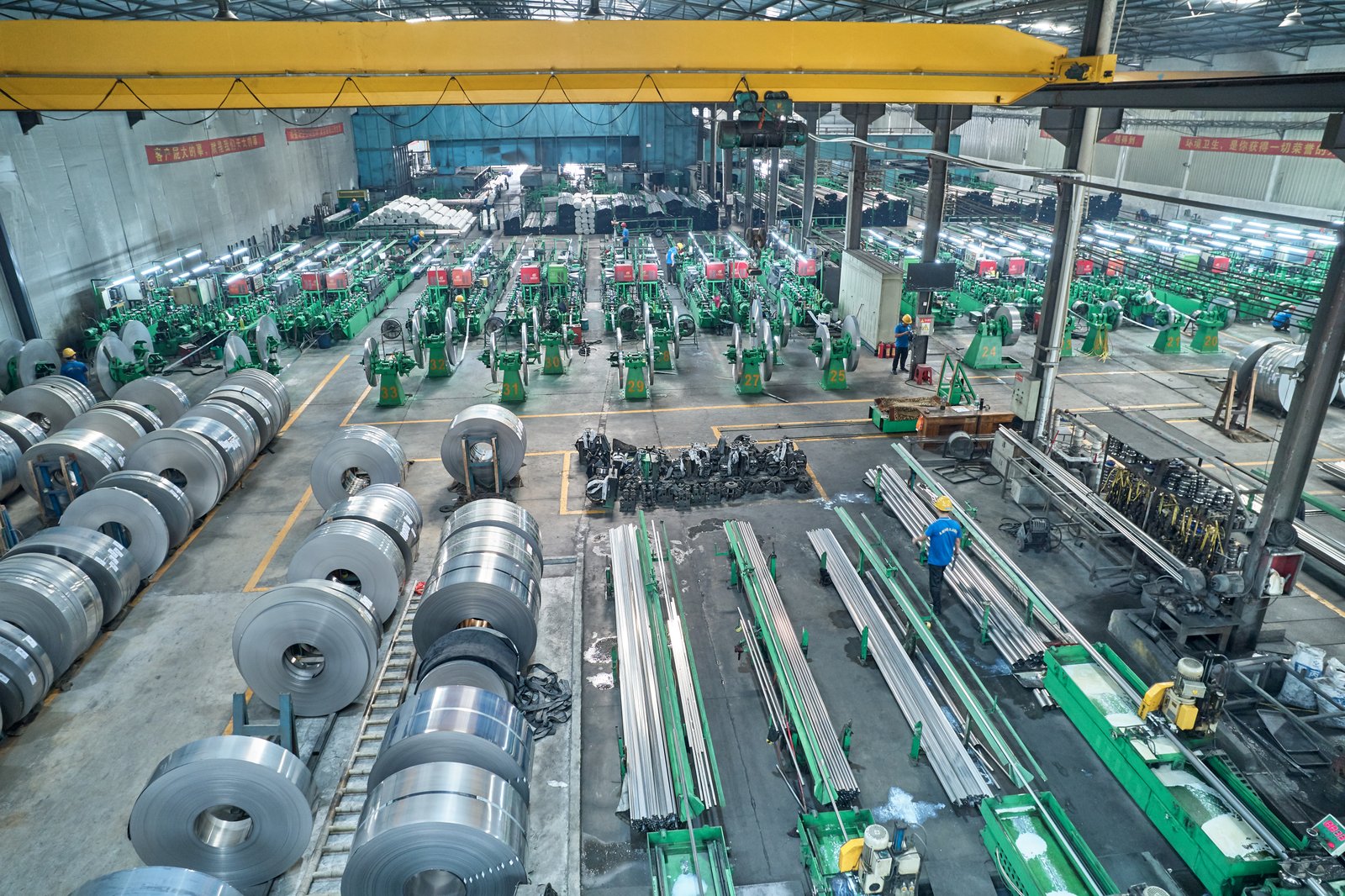
Deconstructing Capital Expenditure (CAPEX)
When we talk about CAPEX for a tube production line, the main machine cost is just the tip of the iceberg. The true initial investment includes a host of ancillary expenses that are critical for getting the line operational. You must account for shipping and logistics, which can be substantial for heavy industrial equipment coming into ports like Jebel Ali or King Abdullah Port. Then there are installation and commissioning costs. A sophisticated line like our XZS Intelligent precision stainless-steel welding-pipe production lines requires expert engineers to ensure it's set up for optimal performance, achieving tolerances of ≤ ±0.05 mm from day one. This isn't just about assembling parts; it's about calibrating a high-precision instrument.
Another significant CAPEX component is the initial tooling. Our machines are designed with quick-change tooling, but the first set of rollers and molds for your desired tube diameters and shapes is part of that upfront cost. ly, site preparation can be a major factor. Does your factory floor need reinforcement? Do you have the required power supply and cooling infrastructure? I recall a client in Saudi Arabia who was expanding their facility for automotive exhaust manufacturing. They rightly factored in the cost of a dedicated, climate-controlled room for their new line, recognizing that protecting the sensitive electronic components (like the PLC and touch-screen controls) from the region's heat and dust was a crucial part of the initial investment, safeguarding its long-term performance and minimizing future maintenance issues.
Ignoring these associated costs gives you a dangerously incomplete picture of the real CAPEX. A comprehensive budget must include the machine's price, freight, insurance, installation, commissioning, initial tooling, and any necessary facility upgrades. This holistic view ensures there are no financial surprises and that your project starts on a solid foundation. Thinking through the entire setup process is as important as negotiating the price of the machine itself.
Unpacking Operational Expenditure (OPEX)
OPEX is the relentless, ongoing cost of running your machinery, and it's where efficiency really pays off. The most significant OPEX components in tube manufacturing are raw materials, energy, labor, and maintenance. Raw material utilization is paramount. An older or less precise machine might have a scrap rate of 5-10%, which is essentially throwing money away. Our production lines, with their precision control and optimized forming process, achieve material utilization rates of up to 98%. For a producer using high-value stainless steel, that 20% higher output from the same amount of raw material translates directly into massive annual savings and a stronger bottom line.
Energy consumption is another major OPEX factor, especially in the GCC where industrial power demands are high. Our lines utilize energy-saving high-frequency welding systems, which are significantly more efficient than older technologies. This not only reduces your monthly utility bills but also aligns with the region's growing emphasis on sustainability in industrial manufacturing5. Then there is labor. A semi-automated line requires multiple operators for setup, monitoring, and adjustments. Our fully automated PLC + touch-screen control systems can be managed by a smaller, more skilled team, reducing direct labor costs and, more importantly, minimizing the potential for human error that leads to defects and waste.
ly, we have maintenance and consumables. This includes spare parts, lubricants, and the cost of downtime itself. Our machines are built with robust, CNC-machined frames designed for long-term durability and stability, reducing the frequency of breakdowns. When maintenance is needed, features like quick-change tooling drastically cut down on changeover times. One client, a furniture tube fabricator in the UAE, told me they reduced their typical tooling changeover from four hours to under one, gaining almost a full shift of production each week. These cumulative OPEX savings are what ultimately determine the true profitability of your investment.
The Strategic Interplay: How CAPEX Influences OPEX
The choice you make on CAPEX has a direct and predictable impact on your future OPEX. This is the fundamental principle of Total Cost of Ownership. Opting for a machine with the lowest possible upfront cost often means accepting compromises in its design, engineering, and components. These compromises inevitably manifest as higher operating costs. For example, a cheaper frame may vibrate more, leading to inconsistent weld quality and higher scrap rates (higher material OPEX). A less efficient motor or welding unit will consume more electricity (higher energy OPEX). Simpler control systems will require more manual oversight (higher labor OPEX) and are more prone to errors.
Let's consider a practical scenario. A producer of sanitary-ware tubes in Kuwait is faced with two choices. Option A is a basic tube mill with a low CAPEX. Option B is an XZS precision line with a 30% higher CAPEX. Option A seems tempting for a business focused on immediate cash flow. However, its lower material utilization (90% vs. our 98%) and higher energy draw mean its OPEX will be significantly higher month after month. Furthermore, its wider tolerance range might mean it cannot compete for high-end, high-margin contracts, limiting revenue potential.
A critical analysis, which we always encourage our clients to perform, shows that the OPEX savings from the XZS line—in materials, energy, and labor—can recoup the initial price difference in as little as 24 to 36 months. After this break-even point, the higher-CAPEX machine becomes substantially more profitable for the remainder of its 15+ year lifespan. This strategic view transforms the purchasing decision from a simple cost comparison into a long-term investment analysis, aligning the initial capital outlay with the strategic goal of sustainable profitability.
How do CAPEX and OPEX influence the financial planning of tube manufacturers in the GCC?
Are your financial forecasts being undermined by unpredictable operational costs? Relying on a simple CAPEX budget without a detailed OPEX forecast is like navigating the desert without a compass. This oversight can lead to severe cash flow problems and jeopardize your long-term expansion plans in the dynamic GCC market.
CAPEX decisions directly impact a company's balance sheet and depreciation schedules, requiring significant upfront capital or financing. Conversely, OPEX affects the income statement and monthly cash flow, influencing budgeting for materials, labor, and energy, which is critical for maintaining liquidity and profitability.
In the GCC, where governments are actively funding industrial diversification through bodies like the Saudi Industrial Development Fund (SIDF)6, financial planning for manufacturers takes on a unique dimension. The availability of favorable loans or grants can make a higher-CAPEX, technologically advanced investment more accessible than in other regions. This strategic environment encourages tube manufacturers to think beyond short-term cash preservation and align their investments with national economic visions. Your financial planning must therefore be a two-pronged approach. First, you must model the impact of a large capital purchase on your balance sheet and debt-to-equity ratio. Second, you need to create a granular, year-over-year forecast of the operational costs and the resulting savings that a more efficient machine will generate. This detailed TCO (Total Cost of Ownership) model7 becomes your most powerful tool, not just for internal planning, but also for securing financing. It demonstrates to lenders and stakeholders that you've done your due diligence and that the investment is built on a foundation of long-term profitability, not just a low initial purchase price. This forward-looking financial strategy is what separates the market leaders from the rest.

CAPEX Impact on Investment and Depreciation
For any GCC-based tube manufacturer, a significant CAPEX outlay for a new production line is a major balance sheet event. The acquisition is recorded as a long-term asset, and its cost is gradually expensed over its useful life through depreciation. The method of depreciation chosen can have a notable impact on financial statements and tax liabilities. For example, an accelerated depreciation method8 can offer larger tax deductions in the early years of the asset's life, improving cash flow during a critical period when the business is still ramping up production on the new line. This can be particularly advantageous for a growing company in a free zone like JAFZA or KIZAD, where optimizing every aspect of cash flow is key to funding further expansion.
I worked with a client, let's call him Khalid, who runs a stainless-steel tube service center in Dammam. When he decided to invest in one of our XZS heavy-duty tube mills, his primary concern was the large upfront cost. We sat down with his finance team and modeled the impact. We showed them how securing a long-term industrial loan, supported by the machine's efficiency credentials, would structure the CAPEX in a manageable way. We also provided the necessary technical specifications and projected performance data for them to build a compelling case for their financiers.
Their financial model demonstrated that while the initial loan increased their liabilities, the new asset significantly boosted the company's value. The depreciation schedule they adopted provided tax shields that partially offset the loan payments in the first few years. This strategic approach to financing and accounting for CAPEX allowed Khalid's company to acquire a top-tier asset that would become a cornerstone of their growth, without putting undue strain on their immediate financial health. It transformed a daunting expenditure into a structured, strategic investment in their future.
OPEX Influence on Budgeting and Profitability
While CAPEX is a periodic, large-scale event, OPEX is the constant pulse of your factory's financial life. It dictates your monthly and quarterly budgets and has a direct, immediate impact on your profitability. In the GCC, two major OPEX variables are energy and labor. While energy costs can be subsidized, industrial consumption is still a massive expense, and any efficiency gain drops straight to the bottom line. Labor dynamics are also complex; while there's access to a diverse workforce, there's also a strong push towards automation (a key part of UAE's "Operation 300bn"9 and Saudi Vision 2030) to increase productivity and consistency.
This is where investing in a higher-CAPEX machine with lower OPEX characteristics pays dividends. When Khalid's facility in Dammam commissioned their new XZS line, their OPEX budget changed dramatically. Their previous, older machine was labor-intensive and had a material scrap rate of nearly 7%. With our fully automated line, they could reassign two operators to other value-adding tasks, immediately reducing direct labor costs per ton of steel processed. More importantly, the precision control and 98% material utilization cut their scrap-related losses by over 80%.
This reduction in waste had a profound effect on their income statement. Stainless steel is their biggest variable cost, and saving several percentage points on material usage each month massively boosted their gross margin. Their budgeting process became more predictable because key variables like energy consumption and material waste were now lower and more stable. This newfound stability and profitability gave them the confidence and the capital to start exploring new markets for their high-quality industrial pipes, a move they couldn't have considered when they were constantly battling unpredictable operational costs.
The Cash Flow Equation: Balancing CAPEX and OPEX
Ultimately, for any business, cash is king. The central challenge of financial planning is to balance the large, periodic cash outflow of CAPEX with the continuous, smaller outflows of OPEX, all while maximizing cash inflow from sales. The decision between a low-CAPEX/high-OPEX machine and a high-CAPEX/low-OPEX machine is fundamentally a decision about the timing and magnitude of cash flows over the asset's lifecycle. A low-CAPEX option preserves cash in the short term but creates a long-term drain through higher operational costs.
Let's visualize this with Khalid's scenario. The initial cash outflow for the XZS machine was higher. However, starting from the first month of operation, his monthly cash outflow for OPEX (materials, energy, labor) was significantly lower than with his old equipment. We can map this out in a simple comparison table, which is a tool I always recommend clients create.
| Cost Element | Low-CAPEX Competitor Machine | XZS High-Efficiency Machine | Financial Impact on a GCC Manufacturer |
|---|---|---|---|
| Initial Purchase (CAPEX) | -$500,000 | -$750,000 | Higher immediate cash outflow for XZS. |
| Monthly Material Waste | $15,000 | $3,000 | $12,000 monthly cash saving with XZS. |
| Monthly Energy Cost | $8,000 | $6,000 | $2,000 monthly cash saving with XZS. |
| Monthly Labor Cost | $12,000 | $7,000 | $5,000 monthly cash saving with XZS. |
| Total Monthly OPEX Saving | - | - | $19,000 with XZS. |
| CAPEX Recoupment Period | - | - | ~$13 months ($250,000 / $19,000). |
This analysis clearly shows that despite the higher initial cash hit, the superior operational efficiency generates substantial positive cash flow savings each month. The payback period for the extra investment is remarkably short. After just over a year, Khalid's decision not only paid for itself but began generating an extra $19,000 in cash every single month. This is the power of strategic financial planning that looks at the complete cash flow equation over time, not just the initial transaction.
What factors should be considered when analyzing the true cost of ownership for tube manufacturing machinery?
Have you ever calculated the total cost of a machine over its entire lifespan? Focusing only on the purchase price is a common mistake that ignores critical long-term expenses. A comprehensive analysis of the True Cost of Ownership (TCO)10 is essential to avoid hidden costs and ensure a profitable investment.
A thorough TCO analysis must include the initial CAPEX and OPEX breakdowns (purchase, installation, training), all recurring OPEX (energy, labor, maintenance, consumables, scrap), and indirect costs like downtime. It provides a holistic financial view of the asset over its entire operational lifecycle, not just its acquisition cost.
Analyzing the TCO is about building a complete financial story for your potential investment. It's a due diligence process that moves beyond the glossy brochures and sales pitches to the hard numbers that will govern your factory's performance for the next 10 to 15 years. This process is especially vital for manufacturers in the GCC, who are competing on a global stage and must leverage every possible efficiency. I always advise my clients to think like forensic accountants, scrutinizing every potential cost, from the obvious to the hidden. It means asking tough questions: What is the real-world energy consumption under full load in a 45°C ambient temperature? What is the mean time between failures (MTBF) for critical components?11 How much production is lost during a typical tooling changeover? By quantifying these factors, you can build a realistic, data-driven TCO model that compares different machinery options on a true "apples-to-apples" basis. This methodical approach removes guesswork and emotion, empowering you to make a decision based on long-term value and profitability.
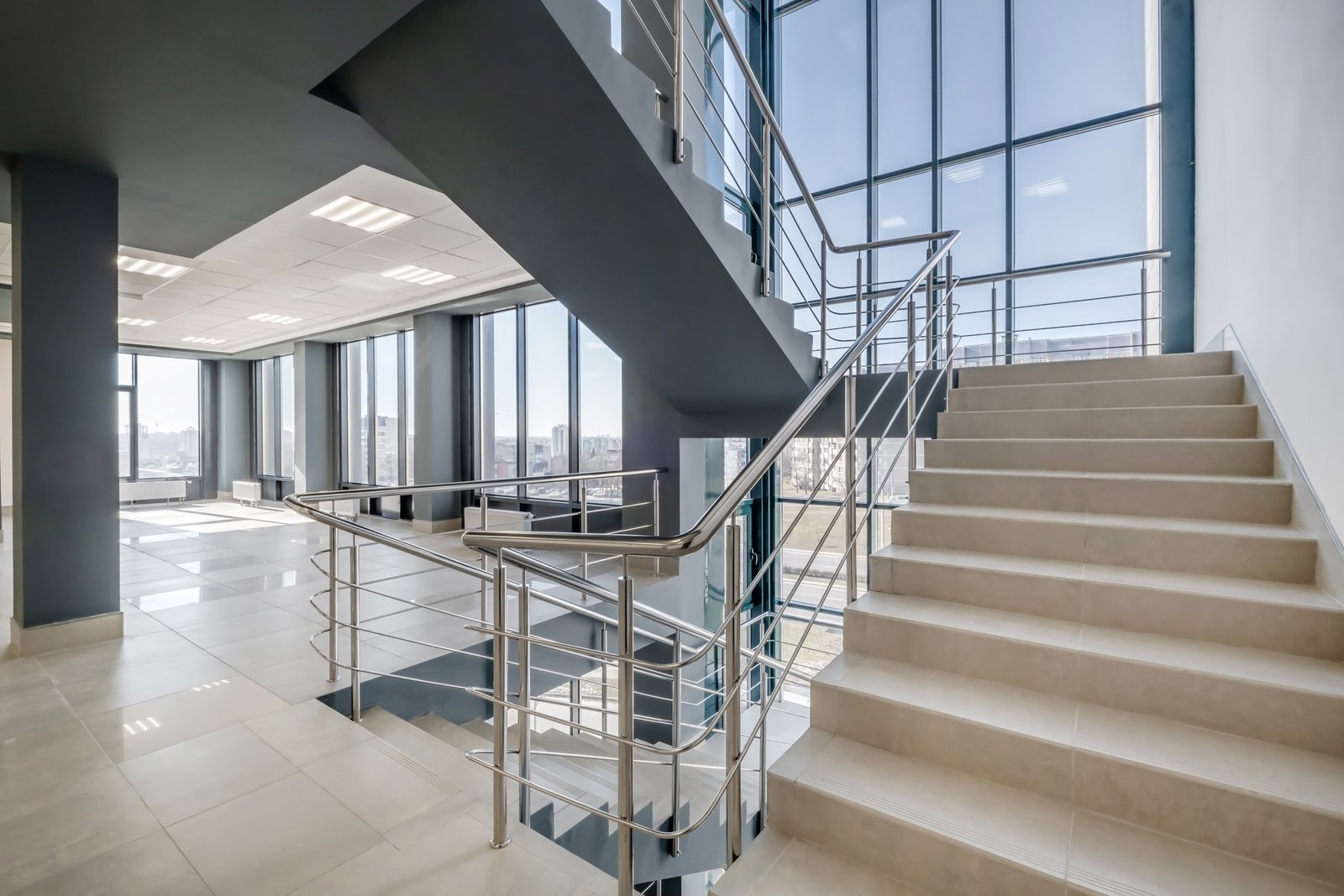
Quantifying the 'Hidden Factory': Downtime and Maintenance
One of the most significant, yet often underestimated, components of TCO is the cost of unscheduled downtime12. Every hour the machine isn't running is an hour you're not producing revenue, yet you are still incurring fixed costs like rent, salaries, and depreciation. This "hidden factory" of lost production can be devastating to your bottom line. Analyzing this factor requires looking at the machine's reliability, which is a direct function of its engineering and build quality. A machine with a robust, CNC-machined frame and high-quality components will have a higher Mean Time Between Failures (MTBF) than a lighter, less durable alternative.
At XZS, we build our machines for long-term durability because we understand that reliability is paramount. I once had a client, an automotive parts supplier in Brazil, who was losing a significant contract because their old tube mill suffered from frequent breakdowns, causing them to miss delivery deadlines. After switching to one of our reinforced heavy-duty welding-pipe machines, their unscheduled downtime dropped by over 90%. They could not only secure their existing contracts but also confidently bid for new ones. When calculating TCO, you must assign a real monetary value to every hour of potential downtime. Calculate your factory's revenue per hour and multiply that by the expected annual downtime of the machine you are considering. This number is a critical part of your OPEX.
Furthermore, scheduled maintenance costs must be meticulously planned. This includes the cost of spare parts, lubricants, and the labor hours of your maintenance team. A key feature to look for is the accessibility of components and the ease of routine tasks. Our machines are designed with maintenance in mind, ensuring that common service points are easy to reach. Additionally, our quick-change tooling system is a prime example of minimizing scheduled downtime. Reducing a 4-hour changeover to less than 1 hour, as many of our clients do, saves 3 hours of lost production time every time you switch sizes, adding up to hundreds of profitable production hours annually.
The Material and Energy Equation
For a tube manufacturer, raw material is typically the single largest cost. Therefore, material utilization rate is one of the most powerful levers for profitability and a cornerstone of TCO analysis. A 1% improvement in material yield13 can often have a greater impact on the bottom line than a 10% reduction in labor costs. A TCO calculation must therefore go beyond simply noting the price of steel; it must critically evaluate how much of that steel ends up as sellable product versus how much ends up in the scrap bin. Our intelligent precision production lines are engineered with this exact principle in mind. By maintaining a precision tolerance of ≤ ±0.05 mm, the forming and welding processes are so stable and repeatable that material utilization can reach up to 98%.
Let's put this into context for a GCC-based producer of decorative tubes using 304-grade stainless steel. A typical older machine might achieve 92% utilization. On a run of 100 tons of steel, that's 8 tons of scrap. An XZS machine at 98% utilization would only produce 2 tons of scrap from the same run. That's a saving of 6 tons of high-value material. At today's market prices, this translates into tens of thousands of dollars saved on a single large project. Your TCO model must multiply this saving across your expected annual production volume to reveal the true financial power of high-efficiency equipment.
Energy consumption follows the same logic. Industrial electricity tariffs, even when subsidized, are a significant OPEX line item. An energy-saving high-frequency welder14, as integrated into our lines, can be 15-25% more efficient than older or lower-cost welding technologies. When calculating TCO, you should request the kilowatt-hour (kWh) consumption rating of the entire line under typical load. You can then model your annual energy cost by multiplying this rating by your expected operating hours and your local electricity tariff. Comparing this projected annual cost between different machines provides a clear, quantifiable data point for your TCO analysis, often revealing thousands of dollars in annual savings with the more energy-efficient option.
Lifecycle Costs: Technology, Training, and Scalability
A truly comprehensive TCO analysis looks beyond the immediate operational horizon to consider the entire lifecycle of the asset. This includes factors like technology obsolescence, training requirements, and future scalability15. Investing in a machine with a modern, fully automated PLC + touch-screen control system is not just about saving labor today; it's about future-proofing your operation. A modern control system can be updated, integrated with factory-wide ERP systems for real-time production monitoring, and is far more adaptable to new products and specifications. A machine with proprietary or outdated electronics, on the other hand, becomes a liability, with expensive and hard-to-find spare parts and no upgrade path.
Training is another critical lifecycle cost. A complex, unintuitive machine requires extensive operator training, and you remain dependent on a few highly skilled individuals. We design our control interfaces to be user-friendly and intuitive. As part of our turnkey solutions, we offer comprehensive training for our clients' teams, ensuring they can operate and maintain the equipment efficiently from day one. This reduces the initial learning curve and empowers a wider range of staff to manage the line, increasing operational flexibility. This upfront investment in training pays off through higher productivity and lower error rates over the machine's life.
ly, consider scalability. Your business plans to grow, and your machinery should support that growth. Does the machine you're considering have the flexibility to handle a wider range of diameters or wall thicknesses with simple tooling changes? Can its speed be increased as your demand grows? A machine that is already at its limit on day one offers no room for future expansion, potentially forcing another large CAPEX decision much sooner than anticipated. Investing in a slightly more capable, flexible machine, like our large-diameter industrial welding-pipe machines, might have a higher initial TCO but provides a much longer and more valuable operational lifecycle, supporting your business's growth trajectory for years to come.
What are the implications of choosing between CAPEX and OPEX for GCC manufacturers?
Is your machinery investment strategy aligned with the ambitious goals of the GCC region? The choice between prioritizing low CAPEX or low OPEX is not merely financial; it's a strategic decision. A misstep can leave you with outdated technology, unable to compete on quality or efficiency in this rapidly advancing industrial landscape.
Prioritizing CAPEX often leads to lower initial investment but potentially higher long-term costs and lower efficiency, hindering competitiveness. Conversely, prioritizing OPEX through higher initial CAPEX in advanced machinery aligns with GCC's goals for quality, automation, and sustainable industrial leadership.
For manufacturers in the Gulf, this decision resonates with national strategic objectives. Initiatives like Saudi Vision 2030, the UAE's Operation 300bn, and Qatar's National Vision 203016 are all pushing for a move up the value chain. They champion industrial ecosystems built on high technology, sustainability, and global competitiveness. Choosing a low-CAPEX, low-technology solution runs counter to this regional trajectory. It may solve an immediate budget problem, but it positions your company in the commodity market, competing on price alone, which is a difficult long-term strategy. On the other hand, making a strategic CAPEX investment in a highly efficient, automated production line is a statement of intent. It signals to the market, your customers, and potential government partners that you are serious about quality, innovation, and long-term growth. It aligns your business with the future of GCC industry, opening doors to high-value projects, government contracts, and export opportunities that would be inaccessible with lower-tier equipment. The implication is clear: your choice is between short-term savings and long-term strategic alignment.
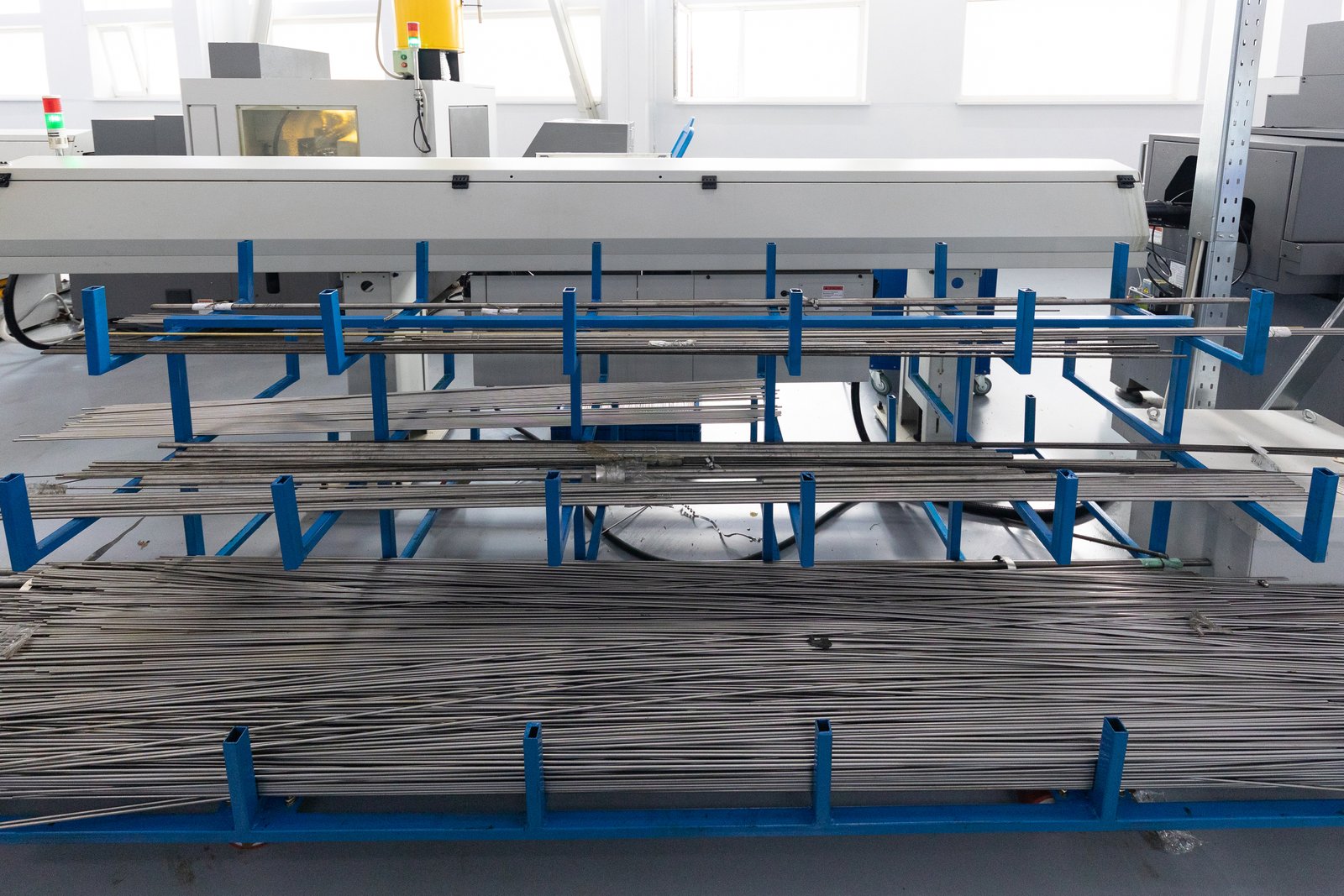
The Low-CAPEX Path: Short-Term Gain, Long-Term Pain
Choosing the path of minimal capital expenditure can be incredibly tempting, especially for new ventures or companies facing tight budget constraints. The immediate benefit is obvious: preserving cash and reducing the need for significant financing. A lower initial investment can get your operation up and running quickly, allowing you to start generating revenue sooner. For a small fabricator making basic construction-grade tubes, this might seem like a perfectly logical and prudent approach. It minimizes risk in the short term, and on paper, the business looks less leveraged.
However, this path is fraught with long-term risks, particularly in the demanding GCC environment. A low-cost machine is almost invariably a compromise on precision, durability, and efficiency. This leads to a cascade of negative operational consequences. Higher material scrap rates, elevated energy consumption, and reliance on manual labor17 become a permanent feature of your cost structure. Greater reliance on manual labor makes you vulnerable to wage inflation and skill shortages, while also increasing the likelihood of quality inconsistencies. I have seen companies take this route, only to find themselves trapped in a cycle of constant maintenance and firefighting.
The strategic implication is that this path anchors you to the bottom of the market. You are forced to compete on price because your product quality and consistency cannot command a premium. You may be unable to bid for lucrative contracts in sectors like automotive, precision furniture, or specialized industrial applications where tight tolerances (like the ≤ ±0.05 mm we guarantee) are non-negotiable. In a region that is actively trying to shed its dependency on low-tech industries, this strategy can lead to long-term stagnation and vulnerability to more technologically advanced competitors.
The High-CAPEX, High-Return Path: Strategic Alignment with Regional Goals
Conversely, choosing to make a significant upfront CAPEX investment in advanced, automated machinery is a powerful strategic move. This approach prioritizes low OPEX and high quality over the entire lifecycle of the asset. The immediate "pain" is a higher initial cash outlay and the need for more rigorous financial planning and justification. However, the long-term gains are transformative. This strategy is in perfect alignment with the industrial development goals of GCC nations, which are actively encouraging and, in some cases, subsidizing the adoption of advanced manufacturing technologies18.
By investing in a line like our Intelligent Precision Stainless-Steel Welding-Pipe Production Line, a GCC manufacturer immediately positions itself as a high-quality producer. The ability to consistently deliver tubes with superior precision, finish, and strength opens up high-margin markets. You are no longer just a supplier of pipes; you become a solutions provider for demanding applications in architecture, automotive, and energy sectors. This move up the value chain provides a defensible competitive advantage that is far more sustainable than simply having the lowest price.
Consider a client of ours, an EPC contractor in the UAE's oil and gas sector. They invested in one of our large-diameter industrial welding-pipe machines. The initial cost was substantial, but it gave them the in-house capability to produce API-grade pipes on demand, to exact specifications. This reduced their reliance on external suppliers, cut project lead times, and gave them immense quality control. They were able to bid on and win projects that were previously out of reach. Their strategic CAPEX decision was not just about reducing OPEX; it was about fundamentally expanding their business capabilities and market position, a move celebrated by their partners in the national oil company.
Navigating Market Perception and Competitive Positioning
The choice between CAPEX and OPEX focus has a profound impact on how your company is perceived by the market. A factory filled with state-of-the-art, automated equipment signals stability, quality, and a long-term vision. When potential clients, especially large international buyers or government agencies, tour your facility, what they see informs their decision as much as your price quote. A clean, efficient, and technologically advanced operation instills confidence. It tells them you can handle large orders, meet stringent quality standards, and deliver on time. This perception is an intangible but incredibly valuable asset.
In contrast, a facility relying on older, manually intensive machinery can signal risk to a potential buyer. They may question your ability to scale, maintain consistent quality, or handle complex specifications. In the competitive landscape of the GCC, where local producers are increasingly competing with top-tier international suppliers19, this perception can be a major disadvantage. You are what you own; your machinery reflects your ambition and your commitment to excellence.
This is why we see a clear trend among market leaders in the Gulf. They are investing in technology. They are automating processes. They are focusing on data-driven production to optimize every facet of their operation. They understand that in the modern industrial economy, the initial capital outlay for superior technology is not a cost but an investment in market leadership. The implication is clear: your choice of machinery defines your place in the competitive hierarchy. A strategic CAPEX investment is an investment in a premium brand identity.
What recommendations can be given to GCC manufacturers for optimal investment strategies in tube manufacturing machinery?
Are you ready to create an investment strategy that secures your future in the GCC's competitive industrial market? Simply buying a machine is not a strategy. A truly optimal approach requires a holistic view that balances financial realities with long-term competitive goals, ensuring every dollar invested delivers maximum value.
GCC manufacturers should prioritize a Total Cost of Ownership (TCO) analysis over purchase price. An optimal strategy involves investing in high-efficiency, automated machinery with low OPEX, aligning with regional quality demands and long-term, sustainable profitability goals.
My strongest recommendation is to shift your mindset from procurement to strategic investment. Don't just ask "How much does it cost?" but rather "What return will it generate over the next decade?". This means doing your homework. Build a detailed TCO model that is specific to your operational context in the Gulf. Factor in your local costs for energy, labor, and capital. Quantify the financial impact of scrap reduction, increased uptime, and the ability to produce higher-value products. In my experience, when manufacturers take the time to build this comprehensive financial picture, the decision becomes incredibly clear. The seemingly high upfront cost of a superior machine is often revealed to be the most cost-effective choice in as little as two to three years. This data-driven approach not only leads to a better investment decision but also creates a more compelling business case for securing financing from local development banks and financial institutions who are eager to back forward-thinking industrial projects. It's about making an informed decision that will pay dividends for years to come.
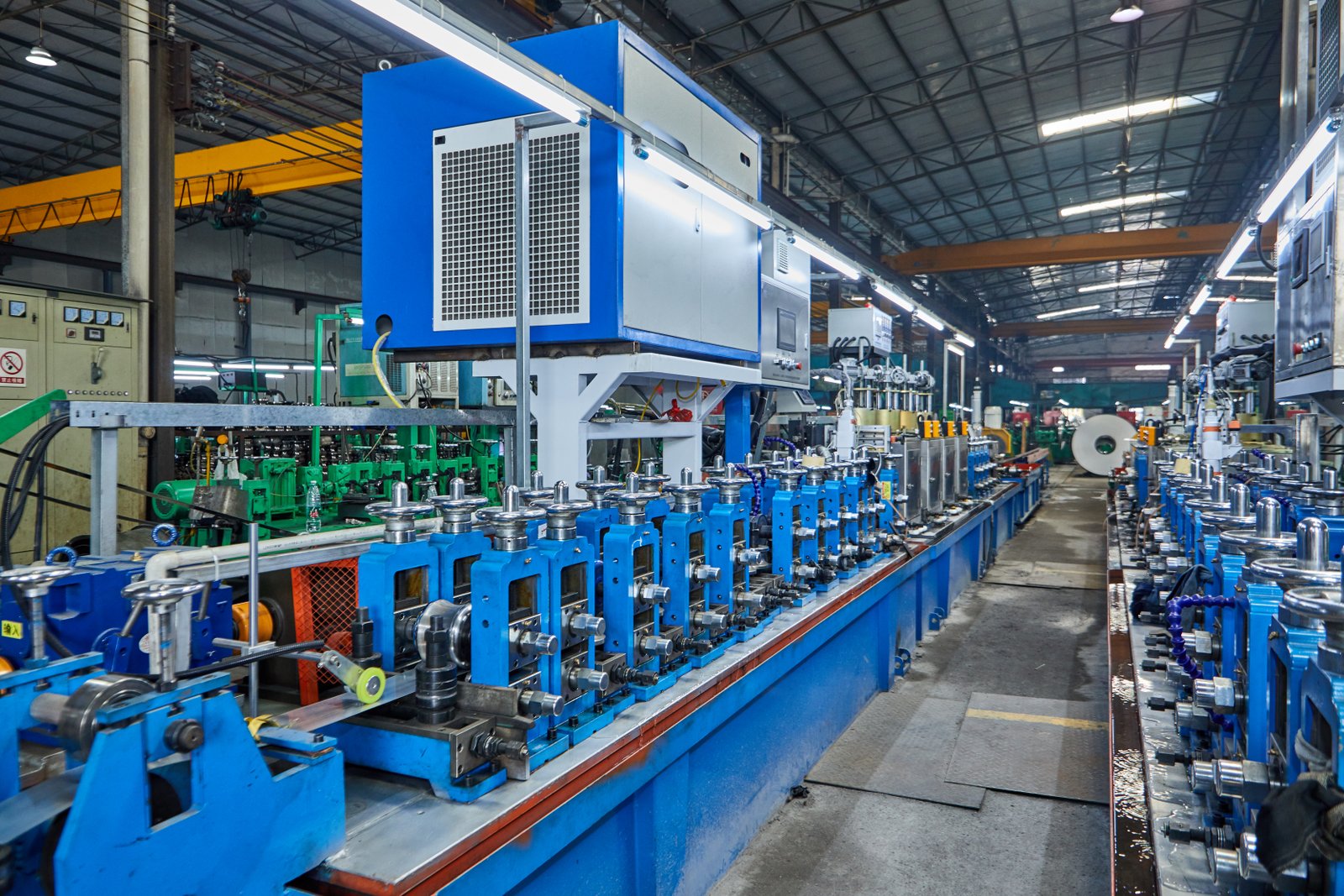
Adopt a TCO-Centric Procurement Model
My first and most critical recommendation is to formally embed the Total Cost of Ownership (TCO) model into your procurement process. This means moving beyond a simple comparison of quotes. Create a standardized TCO worksheet that your team must complete for any significant capital equipment purchase. This worksheet should have dedicated sections for all the key cost drivers we've discussed: initial CAPEX (including installation and training), material utilization rates, energy consumption (kWh), projected maintenance costs, tooling and consumable costs, and the cost of downtime. This creates a disciplined, data-driven framework for decision-making.
For instance, when a building-material wholesaler in Oman was looking to set up their own tube production, they were initially focused on the lowest price. I encouraged them to use a TCO model. We compared a budget machine with one of our HF carbon steel pipe welding lines. On paper, our CAPEX was 25% higher. However, the TCO analysis projected that our machine's 98% material utilization and energy-saving welder would save them over $150,000 annually in OPEX. Furthermore, its higher production speed meant they could meet market demand with a single line instead of two. The TCO model proved that the higher CAPEX would be paid back by OPEX savings in just 22 months.
By enforcing this TCO-centric approach, you remove emotion and sales pressure from the equation. The numbers speak for themselves. This model becomes your financial North Star, guiding you toward the investment that delivers the best long-term value, not just the cheapest entry price. It is the single most effective strategy to ensure your capital is working as hard as possible for your business.
Prioritize Automation and Data Integration
Second, I urge you to prioritize automation and data integration in your investment criteria. This is not a luxury; it is a necessity for competing in the modern GCC industrial landscape. The regional strategic visions are all centered on "Industry 4.0" principles, and your machinery should reflect this. Look for production lines that feature fully automated PLC + touch-screen controls, as all our XZS machines do. This reduces your dependence on operator skill, which is a major variable, and ensures a level of consistency and precision that is impossible to achieve manually. Automation directly lowers labor OPEX and drastically reduces quality-related scrap.
Beyond basic automation, consider the machine's data capabilities. Can it provide real-time feedback on production speed, weld integrity, and material consumption? Can this data be easily exported to your plant management or ERP software? This data is gold. It allows you to move towards predictive maintenance, identify production bottlenecks, and accurately cost your products. For example, a client producing automotive heat exchangers uses the data from their XZS line to provide full traceability reports to their OEM customers, a key requirement for winning and retaining those high-value contracts.
Investing in a "smart" machine is an investment in business intelligence. It transforms your factory floor from a black box into a transparent, data-rich environment. This capability will become increasingly important as customers demand greater transparency and as you seek to optimize every corner of your operation for efficiency and profitability. Don't buy a machine that just makes tubes; buy a machine that also provides the data you need to make better business decisions.
Forge Strategic Partnerships with Your Machinery Supplier
ly, my recommendation is to view your machinery supplier not as a one-time vendor, but as a long-term strategic partner. The relationship should not end when the machine is delivered. A true partner is invested in your success because your growth fuels their own. Before you buy, evaluate the supplier's after-sales service, technical support, and their ability to provide ongoing expertise. At XZS, our ISO 9001-certified model integrates R&D, production, sales, and after-sales service. We see ourselves as partners in our clients' production processes.
This partnership approach means working together on a turnkey solution. It means we help you plan your factory layout, we provide comprehensive training, and we are there to support you with remote diagnostics and readily available spare parts to minimize downtime. I recently worked with a client in India who was new to precision tube manufacturing. We didn't just sell them a machine; our engineering team worked with them for weeks, helping them optimize their workflow and train their staff. This deep level of support ensured they were able to ramp up to full, profitable production in record time.
When choosing a supplier, ask about their presence and support network in your region. Ask for case studies from clients with similar operations. A strong partner will be able to provide not just a machine, but a complete ecosystem of support that de-risks your investment and maximizes its return. In the long run, the quality of this partnership can be just as valuable as the quality of the machine itself.
Заключение
Ultimately, the CAPEX vs. OPEX debate for GCC tube manufacturers is a choice between short-term cost and long-term value. A strategic focus on the Total Cost of Ownership, prioritizing investment in efficient, automated technology, is the most effective path to sustainable profitability and market leadership.
-
Learn the financial differences between investment types and how they impact long-term business strategy ↩
-
Discover how lifecycle costing can reveal hidden expenses beyond the sticker price ↩
-
Understand how Saudi Vision 2030 shapes industrial investment and growth in the Gulf region ↩
-
Understand TCO calculation to make smarter tube mill investments ↩
-
Discover modern sustainability strategies for cutting OPEX in tube production ↩
-
Learn about SIDF’s role in providing loans and incentives for manufacturers in Saudi Arabia ↩
-
Understand TCO modeling and its benefit in financial planning for manufacturers ↩
-
See how using accelerated depreciation provides tax benefits to manufacturers ↩
-
Explore government initiatives on automation and industrial growth in UAE ↩
-
Learn the importance and components of TCO for informed machinery investment ↩
-
Discover the role of MTBF in machinery reliability and cost calculation ↩
-
See how downtime costs affect profitability and overall TCO in factories ↩
-
Find out the financial impact of improving material utilization in tube mills ↩
-
Compare energy savings and costs in tube welding technology ↩
-
Explore how technology, training, and scalability impact long-term ownership costs ↩
-
Learn how national development plans in the GCC directly guide manufacturing and CAPEX/OPEX investment priorities. ↩
-
Avoid costly operational pitfalls by understanding the risks of low-cost, low-tech equipment in manufacturing. ↩
-
Find out if government programs can offset your initial CAPEX in advanced machinery. ↩
-
Benchmark your company against leading global players supplying advanced manufacturing equipment worldwide. ↩


